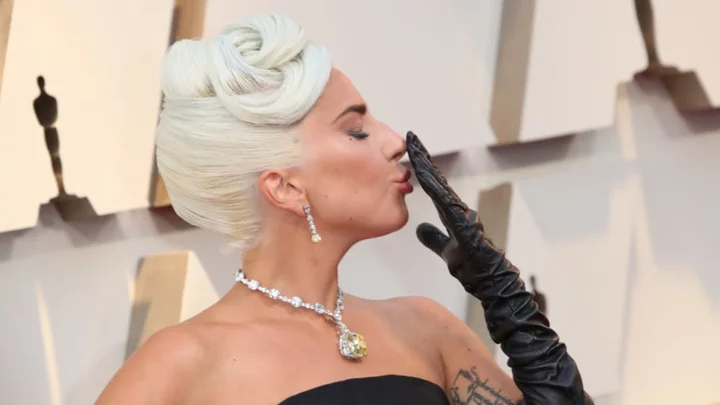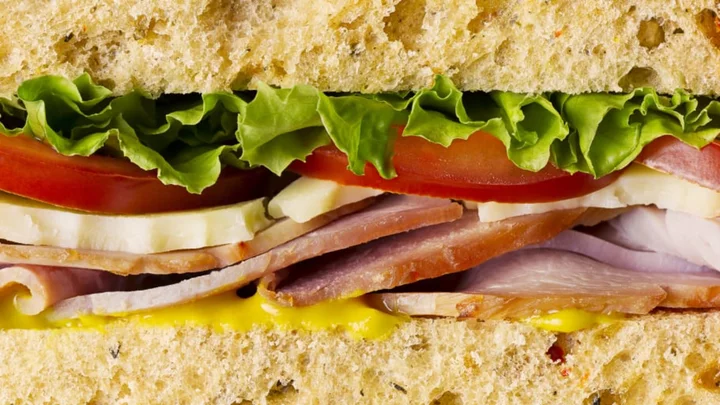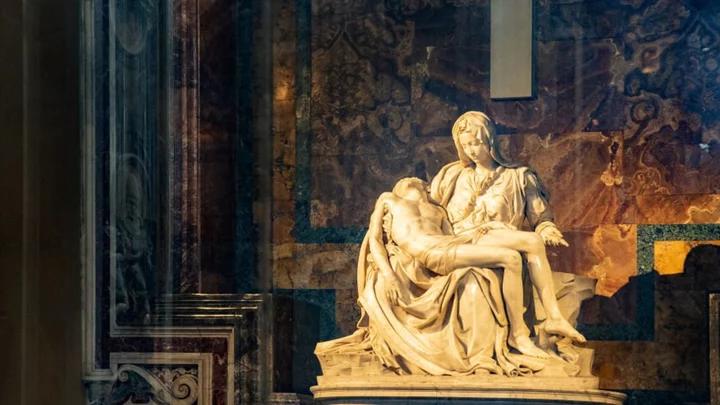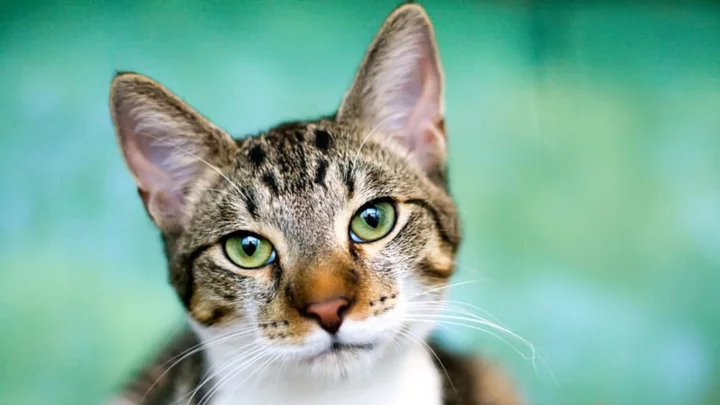Gems have been coveted for thousands of years—hoarded by rulers, looted by opportunists, used as bargaining chips by the desperate, and deployed in portraiture to signify wealth and status. Individual gems, inherited through generations, have dense and illustrious histories of passing between allies and foes that sometimes add to their value and allure. But many of the world’s most famous jewels hide a controversial or mysterious past behind their glittering façades.
1. The Cullinan Diamond
The largest diamond ever found was extracted from the wall of a mine pit near Pretoria in Transvaal ( present-day South Africa) with a penknife. Thus begins the story of the Cullinan, an originally 3106-carat gem discovered in 1905 when the pit superintendent noticed something shiny during a routine inspection. It’s named after Thomas Cullinan, who owned the mine.
In 1907, the local Transvaal government bought the stone—which has a spectacular blue-white color and remarkable clarity—and presented it to their imperial ruler, King Edward VII, as a gift for his 66th birthday the following year. It symbolized a healing of the rift between the two countries that occurred in the aftermath of the Boer War.
The stone was cut into more than 100 pieces; the nine principal stones were named Cullinan I–IX, numbered from largest to smallest. They are considered among the best quality diamonds in the world in terms of their cut, clarity, color, and weight.
Cullinan I, also known as the “Great Star of Africa,” is over 530 carats and is the largest colorless cut diamond in the world. It’s a focal point of the British Crown Jewels, set atop the Sovereign’s Sceptre with Cross and on display in the Tower of London Jewel House. Cullinan II, also known as the “Lesser” or “Second Star of Africa” weighs over 317 carats and is the second-largest cut diamond in the world. It’s the centerpiece of the Imperial State Crown, mounted below the Black Prince’s Ruby. Cullinan III and IV are known as the “Lesser Stars of Africa,” and Cullinan III–IX range from 94.4–4.4 carats and are variously set into brooches, a pendant, and a ring. They are all part of the British monarch’s private collection.
The Cullinan represented—and to some, still represents—what was the world’s mightiest empire, which has yet fully reckon with the effects its colonization had on millions of people. Cullinan I and II featured prominently in the recent funeral procession of Queen Elizabeth II, as they’re set within the Crown Jewels that were displayed atop her coffin. This caused controversy in some quarters, with observers remarking that at no time during her long reign had the queen apologized for the many atrocities carried out during the era of Britain’s colonial rule.
From 1795 to 1961, that colonial rule encompassed present-day South Africa, whose lands were first forcibly taken from its Indigenous peoples by the Boers, and subsequently wrestled from the Boers by the British; as such, the origins of the Cullinan are mired in colonial bigotry. After the queen’s death, calls grew in South Africa for the repatriation of the Cullinan. While the monarchy claims the stone was purchased from the Transvaal government (itself under British rule), Everisto Benyera, a University of South Africa professor of African politics, told CNN, “Our narrative is that the whole Transvaal and Union of South Africa governments and the concomitant mining syndicates were illegal ... Receiving a stolen diamond does not exonerate the receiver. The Great Star is a blood diamond.”
2. La Peregrina Pearl
Another gem with likely origins in plunder, the world’s most famous pearl, La Peregrina—meaning “The Pilgrim” or “The Wanderer”—truly has wandered the globe since its discovery in the Gulf of Panama, likely sometime in the mid-16 century. Its exact origins remain unclear, though it’s commonly said an enslaved African person discovered it in 1513. The pearl was quickly taken into the coffers of the Imperial Spanish, and as such falls under the category of treasure looted by colonialists.
At the time of its discovery, La Peregrina was the largest and most perfectly symmetrical pear-shaped pearl in the world. Indeed, one of the very factors driving the conquistadors to enslave local people and colonize the Americas was their desire to accumulate the impressive pearls found there for themselves.
La Peregrina was immediately given to Spain’s King Philip II, who gifted it to his bride-to-be, England’s Queen Mary I. After her sister’s death (and in a gesture of diplomacy), Queen Elizabeth I returned the gem to Philip II, who made it part of the Spanish Crown Jewels. The gem, which signified beauty, royal lineage, and imperial power, features in many a female royal portrait spanning generations—as depicted by artists including Juan Pantoja de La Cruz and Peter Paul Rubens—and remained in the Spanish Royal family until the 1800s.
In 1813, when the French were driven out of Spain after losing the Battle of Vitoria, Joseph Bonaparte took the pearl with him, which is when it was dubbed La Pelegrina. Joseph gave it to his sister-in-law, Hortense de Beauharnais, whose son, the future Napoleon III, eventually inherited it. After being exiled, Napoleon sold it to the English Duke of Abercorn. The Duke’s descendent auctioned it at Sotheby’s in 1969, when it was bought by the actor Richard Burton as a Valentine’s gift for his wife, Elizabeth Taylor.
Famously, the pearl that has traveled the globe and passed through the hands of some of history’s largest characters was briefly lost by the actress a few months later. She quickly found it, though—in her Pekinese puppy’s mouth. “I just casually opened the puppy's mouth,” she later wrote, ”and inside ... was the most perfect pearl in the world.” After Taylor’s death in 2011, the pearl was auctioned by Christie’s and sold to an anonymous buyer.
3. The Koh-i-noor Diamond
British King Charles III has recently become the newest owner of the 105.6-carat Koh-i-Noor, one of the largest cut diamonds in the world. Yet another controversial member of the Crown Jewels, it has a rich history of passing—or being plundered— from one ruler to another. As historian William Dalrymple, one of the authors of Kohinoor: The Story of the World s Most Infamous Diamond, puts it, the Koh-i-Noor’s history can be described as a “perfectly scripted Game of Thrones-style epic. All the romance, all the blood, all the gore, all the bling.”
The origins of the Koh-i-noor are unknown; one theory suggests that it was extracted in medieval times from the Kollur Mine in southern India’s Guntur District of Andhra Pradesh. The written record starts in 1628, when a court chronicler documents it as being one of the many gems encrusting the famous Peacock Throne of Mughal emperor Shah Jahan. It was subsequently looted by Nadir Shah, leader of the invading Persian army, in 1739. It is Nadir to whom the diamond’s name is ascribed, as upon first seeing it he supposedly exclaimed, “Koh-i-Noor!” meaning “Mountain of Light!”
The gem then passed to the founder of Afghanistan, Ahmad Shah Durrani, in 1751, when the grandson of Nadir Shah—his empire now in ruins—exchanged it in return for Afghan protection. Ahmad Shah’s grandson Shuja Shah Durrani ruled for six years before being overthrown in 1809 and fleeing to The Punjab (part of present-day Pakistan and India) with various jewels. In 1813, under duress, he sold the Koh-i-Noor and other gems to Ranjit Singh, the first Sikh Maharaja of the Punjab and the founder of the Sikh Empire.
After Ranjit’s death in 1839, his son was overthrown and the Koh-i-Noor passed briefly into the hands of the overthrower’s brother, Gulab Singh, who kept it for a year until in 1841, when he passed it to Maharaja Sher Singh in an attempt to curry favor. After Sher Singh was assassinated in 1843, 5-year-old Duleep Singh, youngest son of Ranjit Singh, became Maharaja and the next owner of the Koh-i-Noor.
In 1849, after two Anglo-Sikh wars with the British—who were keen to exploit the unstable situation, which saw the throne of the Punjab occupied by four different leaders in as many years—the Sikh Empire fell to the quasi-governmental British East India Company. As part of the Treaty of Lahore, Duleep Singh (then 10) was forced to relinquish his sovereignty, while the Company annexed Punjab and claimed the Koh-i-Noor; the diamond was later presented to Queen Victoria as a spoil of war.
Despite its history of bedazzlement, the stone failed to impress the British when it was displayed at the Great Exhibition in 1851. Prince Albert had the diamond recut into its current brilliant oval shape by Dutch jewellers, who removed several flaws and reduced the diamond’s weight by 17 gram. The gem was then set in a brooch and became part of Queen Victoria’s personal property. After her death, it passed into the Crown Jewels and was set in the coronation crown of Queen Alexandra, wife of Edward VII. In 1911, it was transferred to the crown of Queen Mary of Teck, consort to George V. Its final placement was set atop the crown of Queen Elizabeth the Queen Mother in 1937, and was last seen in public in 2002 at her funeral. The crown now lies on display in the Tower of London’s Jewel House.
Ownership of the Koh-i-Noor remains contentious. Some consider it a simple gift, a heinous theft, or the result of a military treaty. Demands for its repatriation have arisen many times, with the governments of India, Pakistan, Iran, and Afghanistan all issuing legal claims. Whether the British will retain its ownership remains to be seen, although so far their government has rejected all claims, stating that ownership of the Koh-i-Noor is non-negotiable.
Fear of a diplomatic incident excluded it from King Charles III’s coronation. Queen Camilla chose to wear a modified version of Queen Mary’s crown that did not include the controversial stone. According to the Associated Press, some people in India had said that featuring the stone in the coronation “could be an uncomfortable reminder of Britain’s oppressive past.” The Tower of London has recently revised the information displayed about its acquisition to more accurately divulge the details about its complicated past.
4. The Black Prince’s Ruby
The Black Prince’s Ruby isn’t a ruby at all—it’s a spinel, a gemstone that, while similar in color to the ruby, isn’t as dense or hard and has a different structure and chemical composition. It’s one of the largest gem-quality red spinels in the world.
Believed to have originated in a mine in Kuh-i-Lal in present-day Tajikistan, it first appears in written records in 1366, when it was owned by Abu Sa’id, the Moorish Prince of Granada in present-day Andalucía, Spain. Sa’id had overthrown his brother-in-law, Mohammed, who fled to the protection of the King of Castile and Léon, Peter of Castile. This was during the time of the Reconquista, the Christian retaking of Iberian territories from the Moors. Peter invited Abu Sa’id to Seville ostensibly to negotiate, but when he arrived, the king had Sa’id and his companions murdered, and their jewels confiscated.
Soon after, threatened by a revolt led by his brother Henry of Trastamara, Peter fled to the Bordeaux court of The Black Prince, Edward of Woodstock and Prince of Wales, seeking assistance. Henry was defeated at the Battle of Nájera in 1367, and Peter passed the ruby to Edward as payment. From then onward, the ruby mainly stayed in the hands of the British monarchy, although not without occasional peril.
Henry V wore it in his helmet at the Battle of Agincourt in 1415 and nearly lost it— and possibly his life—when he was struck on the head with an axe. A “great balas ruby” appears in the inventory of Henry VIII that could be the Black Prince’s gem, and was also part of Elizabeth I’s private collection; King James I set it in his state crown. Oliver Cromwell sold the ruby during the Interregnum, when it easily could have been lost for good, but fortuitously, it was repurchased for the Restoration of Charles II in 1660. Ramping up the excitement further, it was part of the famous failed heist by Colonel Blood in 1671, the closest that anyone has come to taking the Crown Jewels from the Tower of London.
Its subsequent history has been tame in comparison. The 170-carat stone was placed in the new imperial state crown for Queen Victoria’s coronation in 1838 and is visible in her coronation portrait. Today, it’s mounted directly above the Cullinan II diamond at the front of the Imperial State Crown, which is lodged at the Jewel House in the Tower of London. Presumably the descendants of the Moorish rulers would have a valid claim for its repatriation, had the Catholic Kings not retaken Granada in 1492 and disbanded the kingdom of Al-Andalus.
5. The Hope Diamond
The Hope Diamond, at 45.5 carats, is the biggest known dark blue diamond. It has a rare deep blue color created from traces of boron, and when exposed to ultraviolet light, it glows a blood red. While its precise origins are unknown, it’s thought that a French merchant named Jean-Baptiste Tavernier obtained a rough diamond from the Kollur mine in India around the mid-17th century that became known as the Tavernier Blue. Whether he bought it or stole it is unclear, but after being cut it was sold to the King of France, Louis XIV, in 1668. It was recut to become the Blue Diamond of the Crown of France, and it stayed in the French royal family until the time of the French Revolution.
In 1792, while Louis XVI and Marie Antoinette were imprisoned, intrepid thieves stole the Crown Jewels from the Garde Meuble during a five-night-long raid. One of the thieves attempted to sell some of the loot in London and was thrown into debtor’s prison for his trouble, but the Blue was not in his possession. Many of the jewels were later recovered, but the Blue Diamond was not among them; indeed, it was never seen publicly in the same form again.
There is a gap in in the gem’s history until 1812, when a deep blue diamond was recorded under the ownership of London diamond dealer Daniel Eliason. By this time, the stone was smaller than the French Blue, and likely had undergone further recutting—and rather tellingly, the gem re-entered circulation two days after the expiry of the window for prosecuting crimes committed during the French Revolution.
What happened next is again the subject of some mystery. The supposedly cursed diamond may have come into the ownership of King George IV, but if it did pass into the British monarchy, it wasn’t retained there. It’s thought that the diamond may have been auctioned off after the king’s 1830 death to help pay off his debts. What is certain is that it vanished again.
In 1839, the diamond resurfaced in the written record, featuring in the catalog of gems owned by the wealthy Henry Philip Hope, a London banker whose name it still carries; it stayed in the Hope family for the rest of the century. When Lord Francis Hope faced bankruptcy, he sold the diamond, which subsequently passed through various hands before landing in the ownership of Pierre Cartier. He reset it and eventually convinced the wealthy socialite Evalyn Walsh McLean to purchase it in 1911. In 1949, the trustees of McLean’s estate sold the diamond to Harry Winston, a diamond merchant from New York; nine years later, he donated it to the Smithsonian, where it still resides in the Museum of Natural History.
While we may never know what happened to the Hope during its various disappearing acts, one of the enduring mysteries it is associated with was cleared up in 2005. Computer modeling of detailed drawings of the original Crown Jewel were compared with scans of the Hope. That research concluded that the Hope is indeed the remains of the same stone following two recuttings; further confirmation came via a lead cast of the French Blue that was discovered in 2007.
6. The Hortensia Diamond
This is a jewel that was stolen and recovered, then stolen and recovered again. It was named after Hortense de Beauharnais, Napoleon’s step-daughter and Josephine’s daughter and later the Queen of Holland. Yet the mystery of the Hortensia Diamond lies in its name, with some sources saying it was worn by the queen and others saying she never owned or wore it.
The 20-carat Hortensia Diamond is one of the rarest pink diamonds because it has orange as a secondary color; its perfection is marred by a feather crack running through it. Known to have belonged to Louis XIV, it likely originated in the Kollur mines in southern India in the mid-17th century. It became part of the French crown jewels and featured in an inventory of the same in 1691.
In 1792, the Hortensia Diamond was stolen during the same robbery of the Garde Meuble that saw the Blue Diamond taken. It was recovered in 1793 from a garret in the Halles district of Paris along with other jewels; the stones were found after one of the thieves disclosed their location prior to being executed. After the Revolution, the stone was mounted on Napoleon’s epaulette braid and in 1830 it was stolen again—though this time it was swiftly recovered. In 1856, it was placed on a headband and given to Empress Eugénie, wife of Napoleon III. The French Crown Jewels were put up for sale in 1887, but the Hortensia was retained due to its historic significance; it’s now on display with the remaining French Crown Jewels in the Galerie d’Apollon of the Louvre museum.
7. The Lahore Diamond
Another component of the British Crown Jewels, the 22.5-carat Lahore Diamond, has the dubious privilege of sharing some of its contentious history with the Koh-i-Noor. Although the Royal Collection website attributes ownership of this gem as “presented to Queen Victoria in 1851,” it’s clear from the terms of the Treaty of Lahore that when the East India Company forced the young Maharajah Duleep Singh to resign—relegating himself to exile and his lands to the British state—he was also obliged to hand over the Lahore Diamond. As DNAIndia puts it, “The Lahore Diamond was claimed by the British during the invasion of India in the 1850s.”
Although its origins are unclear, the Lahore Diamond likely came from the Golconda region in southern India in the early 18th century. The city whose name it bears was the capital of the Mughal Empire, where it resided under the ownership of the imperial family. Eventually, it passed into the possession of the Maharajahs of the Sikh Empire, and from there it fell into the hands of the British.
In 1853, the Lahore Diamond was incorporated into the Timur Ruby necklace, one of the British Crown Jewels. In 1858, its setting was converted so that it could also be worn on a new piece—nowadays known as the coronation necklace, or unofficially, the Lahore necklace—where it is the headstone of 25 other diamonds that were taken from Queen Victoria’s Royal Collection. After Victoria’s death, the Lahore Diamond was worn during the coronations of every subsequent queen: Queen Alexandra, Queen Mary, Queen Elizabeth the Queen Mother, Queen Elizabeth II, and most recently, Queen Camilla—even though the stone is just as contested and mired in colonial legacy as the omitted Koh-i-Noor.
8. The Timur Ruby
Like the Black Prince’s Ruby, the 361-carat Timur Ruby is a spinel, and one of the world’s largest. It was owned by the Mughal emperors before it was taken from Delhi in the Persian raids of Nadir Shah. Indeed, the names of five of its owners—Jahangir, Shah Jahan, Farrukhsiyar, Nadir Shah, and Ahmad Shah Durrani—are exquisitely carved into the gem, along with Akhbar the Great, who is thought to have been added by his son, Jahangir.
The Timur Ruby was set into the Peacock throne along with the Koh-i-Noor Diamond. Since 1612, has been subject to an identical tortuous history, traveling from India to Persia to Afghanistan, back to India, and finally Britain after the Treaty of Lahore. It was displayed at the Great Exhibition in 1851 and became part of Queen Victoria’s private collection in the Timur Ruby necklace. Now in the Royal Collection, its ownership is disputed in a similar fashion to the Koh-i-Noor.
9. The Star of Asia
The 330-carat Star of Asia is an intense blue-violet star sapphire—one of the largest of its type—with rare reflective properties that give it the appearance of a sharp star. It was likely mined in the Mogok mines of Burma (present-day Myanmar), a region famous for its blue star sapphires.
The gem’s origins are murky. The story goes that the King of Mandalay decreed that all large gems discovered at the mines would automatically become his property on pain of death. This resulted in gems disappearing for years, being broken into smaller pieces, or smuggled out of the country to a ready market in India. After the sapphire came into the hands of mineral dealer Martin Ehrmann, he sold it to the Smithsonian in 1961; Ehrmann told the institution the stone had been owned by the Maharajah of Jodhpur at some unknown period. The curators initially accepted his story, but it’s now believed Ehrmann fabricated the Maharajah's ownership to inflate the price.
A further mystery surrounds the craftsperson who cut the stone, with their skills lauded as those of an expert due to the high degree of skill it would have taken to align the star at the center and the rare foresight to have been able to look at a rough stone and predict its superb potential.
The Star of Asia is currently in the Smithsonian Museum of Natural History.
10. The Tiffany Diamond
The 287.4-carat Tiffany Diamond is one of the largest yellow diamonds in the world. It was unearthed in the Kimberley diamond mine in present-day South Africa in 1877 and acquired by Tiffany & Co. founder Charles Lewis Tiffany in 1878. At the time of the Tiffany’s discovery, South Africa was a British colony and the Black laborers employed at the mines were under the strict control of the mines’ white owners. Racist laws that laid the groundwork for apartheid were put in place to ensure the workers’ wages were pitiful while they worked in dangerous conditions.
It was this that caused a controversy in 2021, when Tiffany & Co. debuted its advertising campaign with Beyoncé—only the fourth person ever to wear the diamond, and the first Black woman—and Jay-Z. As Karan Attiah put it in the Washington Post, “it’s time to expand the definition of blood diamond … to encompass gems such as the Tiffany, via which … thousands of African lives were lost and communities destroyed in the colonial quest to control the continent’s resources.”
Referring to a UN certification scheme to prevent blood diamonds entering the market, Tiffany’s responded to the furor by saying, “As global leaders in sustainable luxury, Tiffany & Co. is committed to sourcing natural and precious materials in an ethical and sustainable manner. We have a zero-tolerance policy toward conflict diamonds, and source our diamonds only from known sources and countries that are participants in the Kimberley Process.” That program, however, was established 125 years after the purchase of the Tiffany Diamond.
There was minimal backlash when Lady Gaga wore the stone to the Oscars in 2019. The Tiffany Diamond resides in its permanent home in the Tiffany & Co. flagship store on Fifth Avenue in New York City.
This article was originally published on www.mentalfloss.com as 10 of the World’s Most Controversial Gemstones.









